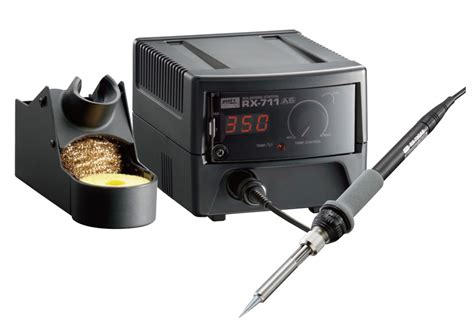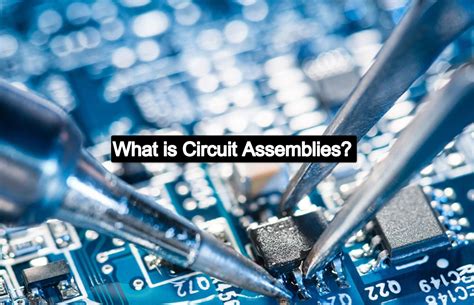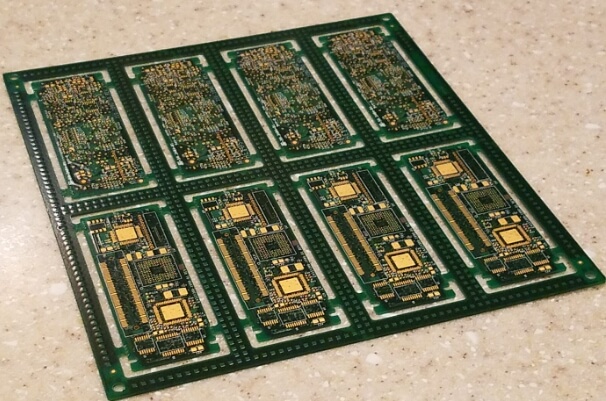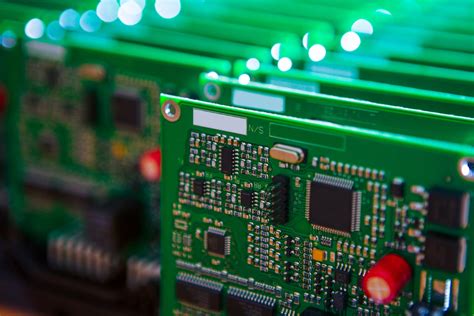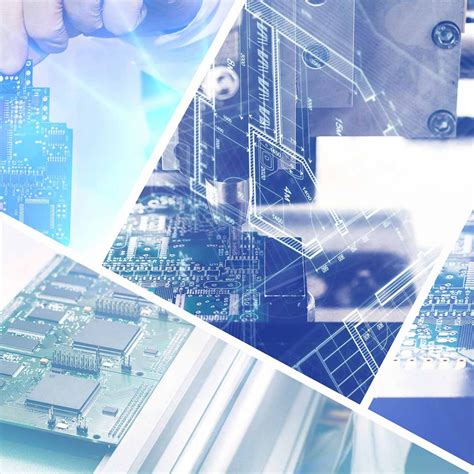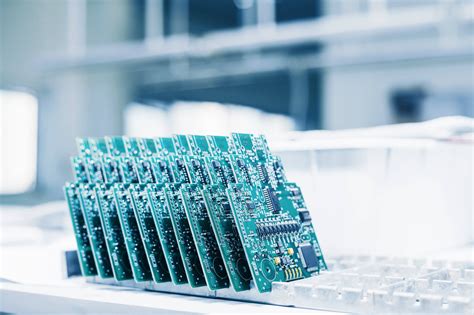Innovative Solutions in PCB Board Assembly for Modern Electronics

Key Takeaways
In the realm of PCB assembly, several pivotal advancements are shaping the landscape of modern electronics. The integration of innovative solutions has led to enhanced efficiency in PCBA processes, enabling manufacturers to optimize production schedules and reduce lead times. Such solutions often involve the implementation of advanced software systems, which streamline workflow and improve overall productivity. Moreover, cutting-edge technologies such as automated inspection tools and precision machinery are crucial in enhancing accuracy during the assembly process, significantly minimizing the risk of errors that can lead to costly reworks.
Sustainability has also become a key focus in PCB board assembly, with manufacturers increasingly adopting environmentally friendly materials and practices. This shift not only addresses regulatory pressures but also appeals to a consumer base that is becoming more environmentally conscious. The role of automation in modern PCBA cannot be overstated, as it facilitates a level of consistency and precision that manual processes often struggle to achieve.
As challenges persist in the evolving landscape of PCB production, such as supply chain disruptions and evolving technological demands, adopting innovative strategies will be critical for companies aiming to stay competitive. Overall, these takeaways encompass a holistic view of how PCB assembly is transforming with new technologies and methodologies that enhance efficiency, accuracy, and sustainability efforts across the industry.

The Evolution of PCB Board Assembly Techniques
The landscape of PCB assembly has transformed significantly over the years, driven by rapid advancements in technology and the ever-increasing demands of modern electronics. Initially, the process was highly manual, relying on labor-intensive methods that often resulted in inconsistencies and errors. As the industry evolved, pcba techniques incorporated more sophisticated machinery and production systems, paving the way for enhanced speed and precision. One key development has been the adoption of surface-mount technology (SMT), which allows for smaller components to be mounted directly onto PCB boards, optimizing space and improving overall design. Additionally, the integration of advanced imaging systems has enabled manufacturers to achieve greater accuracy in component placement, reducing defects and enhancing product reliability. The evolution further extends into areas such as modular assembly techniques and multi-layer boards, which have broadened the scope for complex electronic devices. As these innovations continue to shape the industry, manufacturers are increasingly focused on achieving not only operational efficiency but also strengthening sustainability practices within their production processes. This dynamic evolution underscores a pivotal shift in pcb assembly methodologies that caters to both technological advancements and ecological considerations in today’s electronic devices.

Key Innovations Driving Efficiency in PCB Manufacturing
The landscape of PCB assembly is evolving rapidly, driven by technological advancements aimed at enhancing production efficiency. One of the most significant innovations is the introduction of automated assembly systems, which streamline the process and reduce human error. These systems utilize robotic arms and precision placement technologies to ensure that components are accurately soldered onto the PCB board, resulting in a more reliable end product. Additionally, the integration of advanced software for design for manufacturability (DFM) allows engineers to optimize layouts and minimize waste, effectively enhancing both efficiency and sustainability in the manufacturing process.
Moreover, utilizing smart technologies such as IoT (Internet of Things) devices in manufacturing lines provides real-time monitoring and data analytics, enabling companies to make informed adjustments instantaneously. This intelligent feedback loop not only increases productivity but also enhances quality control, a crucial factor in today’s competitive market. As companies continue to explore innovative solutions, it becomes evident that embracing these advancements is not just an option but a necessity for thriving within the ever-evolving electronics landscape.
“Adopting modern techniques in PCB assembly can significantly reduce costs while improving efficiency.”
By leveraging these innovations, manufacturers are positioned to meet rising demands while also adhering to stringent sustainability goals, thereby setting new industry standards in the realm of PCBA practices. In summary, innovation serves as the backbone of efficiency within PCB production, driving forward not only technological advancements but also redefining qualities intrinsic to modern electronics.
Enhancing Accuracy in PCB Board Assembly: Tools and Technologies
In the realm of pcb assembly, the quest for enhanced accuracy has led to the adoption of various tools and technologies that significantly improve the precision of printed circuit board assembly. Central to these advancements is the integration of automated optical inspection (AOI) systems, which utilize high-resolution cameras to identify defects in solder joints and component placement at extraordinary speeds. This technology not only minimizes human error but also boosts the efficiency of quality control processes.
Furthermore, 3D solder paste inspection systems have emerged as vital components in achieving high accuracy levels in pcba. By enabling real-time verification of solder paste volume and alignment, these systems help ensure that each board is assembled with precision. Additionally, the utilization of advanced software tools for design verification and simulation allows engineers to minimize potential issues before physical assembly begins.
| Tool/Technology | Functionality | Benefits |
|---|---|---|
| Automated Optical Inspection (AOI) | Detects defects post-assembly | Reduces errors, increases reliability |
| 3D Solder Paste Inspection | Ensures proper paste application | Improves accuracy, less rework |
| Design Verification Software | Simulates board performance before assembly | Saves time, optimizes designs |
With these innovations, not only is accuracy enhanced in pcb assembly, but they also promote a higher standard in manufacturing practices. The strategic implementation of these tools empowers manufacturers to produce more reliable and efficient products that can meet the demanding needs of modern electronics. Adaptation to such technologies is becoming increasingly necessary for staying competitive within the dynamic landscape of electronic manufacturing.
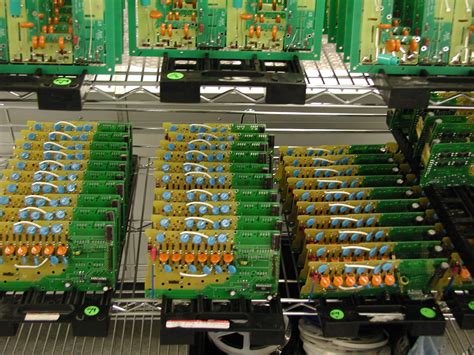
Sustainable Practices in PCB Production
As the demand for electronic devices continues to surge, sustainable practices in PCB assembly have become increasingly vital in minimizing environmental impact. Companies are now focusing on innovative strategies that promote eco-friendly materials and processes, thereby reducing waste during pcba manufacturing. One such approach is the use of biodegradable substrates and lead-free solder, which not only comply with global environmental regulations but also enhance the sustainability of products. Additionally, manufacturers are adopting closed-loop systems to recycle waste generated during the pcb assembly process, ensuring that materials are reused rather than discarded. This move not only conserves resources but also aligns with modern consumers’ preference for environmentally responsible products. By integrating energy-efficient machinery and optimizing production techniques, manufacturers can significantly decrease their carbon footprint while maintaining high standards of precision and quality in pcba output. Such sustainable practices foster innovation within the industry, driving forward a new era where responsibility and efficiency go hand in hand in PCB production.
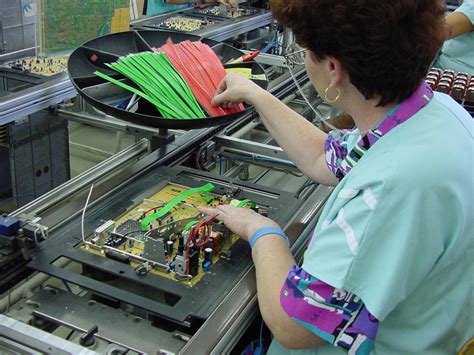
The Role of Automation in Modern PCB Assembly
The integration of automation in PCB assembly is fundamentally transforming the landscape of electronics manufacturing. By leveraging advanced technologies such as robotics, artificial intelligence, and machine learning, manufacturers are achieving unprecedented levels of efficiency and precision in the production of printed circuit boards (PCBs). Automated systems streamline the complex PCBA process by reducing manual labor requirements and minimizing human error, leading to a more consistent output quality. Robotics can handle intricate tasks with remarkable speed, while AI-driven quality control systems continuously monitor and analyze the assembly process, ensuring defects are identified and rectified swiftly. Furthermore, automation facilitates better logistics management within the manufacturing environment, optimizing material usage and reducing waste—key components in moving toward sustainable practices. As these innovations continue to evolve, companies can expect enhanced scalability in their operations, allowing them to respond adeptly to fluctuating market demands. The ongoing advancements in automation not only improve productivity but also contribute significantly to the overall sustainability of PCB assembly, making it a pivotal element for modern electronics systems.

Challenges and Solutions in PCB Board Assembly Today
The landscape of pcb assembly is currently facing numerous challenges that stem from the increasing complexity of electronic devices and the demand for high-quality production. One significant issue is the miniaturization of components, which often leads to difficulties in achieving the necessary precision during the pcb assembly process. To combat this, industries are investing in advanced technologies that enhance pcba accuracy, such as high-resolution solder paste printers and automated optical inspection systems. Additionally, supply chain disruptions have become a concern, particularly as global dependencies affect material availability and cost fluctuations. Developing strong relationships with multiple suppliers and leveraging just-in-time inventory practices can be effective solutions to this challenge. Another considerable hurdle is ensuring sustainability throughout the manufacturing process; however, innovative practices such as using eco-friendly materials and reducing waste through lean manufacturing techniques are gaining traction. By implementing these strategies, manufacturers can not only address current obstacles but also set a foundation for future advancements in pcb board assembly, ultimately leading to more efficient, precise, and sustainable production methods.
Future Trends in PCB Assembly for Electronics
As the electronics industry rapidly evolves, pcb assembly is undergoing a significant transformation driven by technological advancements and changing consumer demands. One of the key trends shaping the future of PCBA is the integration of smart manufacturing techniques, which leverage data analytics and real-time monitoring to optimize production processes. This shift towards more intelligent systems not only enhances efficiency but also allows for superior quality control, reducing the risk of defects significantly. Another notable trend is the move towards greater customization in PCB designs, facilitated by advanced software tools that enable designers to create highly tailored solutions that meet specific needs without sacrificing production speed. Moreover, sustainability remains a pivotal focus in modern pcb board assembly, with manufacturers increasingly adopting eco-friendly materials and processes to minimize waste and energy consumption. The role of automation cannot be overstated; as robots and AI-driven technologies continue to play an integral part in assembly lines, they enhance precision while freeing human workers to focus on more complex tasks. Collectively, these trends signify a bright future for PCB assembly, where innovation not only drives the industry forward but also ensures a more sustainable and efficient manufacturing landscape.
Case Studies: Successful Implementations of Innovative PCB Solutions
In the rapidly evolving landscape of electronics, pcb assembly has seen significant advancements, spotlighted through various case studies that showcase the successful implementation of innovative solutions. One noteworthy example is a tech company that integrated automated pcba processes into its manufacturing workflow. By adopting advanced robotics and AI-driven systems, they achieved a remarkable increase in production efficiency and accuracy. This not only minimized human error but also accelerated the overall manufacturing timeline. Another case involved a leading automotive manufacturer that utilized sustainable practices in their pcb board assembly processes. By switching to eco-friendly materials and implementing waste reduction strategies, they significantly lowered their carbon footprint while maintaining high product quality standards. These examples illustrate how innovative pcb assembly techniques are not just theoretical but are making a tangible impact in different sectors, reflecting a promising trend towards greater efficiency, accuracy, and sustainability in modern pcba practices. Through continuous adaptation and integration of cutting-edge technology, the future of electronic manufacturing looks increasingly bright.
Conclusion
In the dynamic landscape of modern electronics, PCB assembly serves as a vital component that facilitates innovation and efficiency. The industry’s growth is largely attributed to the ongoing advancements in PCBA techniques, which have transformed traditional manufacturing processes. These advancements not only emphasize precision and accuracy but also incorporate sustainability practices that resonate with today’s ethical manufacturing standards. Techniques such as automation and advanced robotic systems are setting new benchmarks for efficiency, significantly reducing error rates and waste during production. Furthermore, collaboration between engineers and manufacturers aims to streamline workflows, ensuring that the prototyping to mass production phases transition smoothly. By embracing these innovative solutions, companies are discovering ways to enhance their operational capabilities while minimizing environmental impacts. As the demand for more complex electronic devices continues to rise, it is essential for manufacturers to adapt and innovate within the pcb assembly arena to meet these challenges head-on, ensuring a future where electronics are both functional and sustainable.
FAQs
What is PCB assembly?
PCB assembly, or PCBA, is the process of soldering electronic components onto a printed circuit board (PCB) to create a functional electronic assembly.
What are the different types of PCB assembly processes?
There are various types of PCB assembly processes, including surface mount technology (SMT), through-hole technology (THT), and mixed technology. Each has its own advantages depending on the requirements of the electronic device.
How does automation enhance PCB assembly efficiency?
Automation plays a crucial role in modern pcb assembly, as it reduces manual labor, improves precision, and speeds up the manufacturing process. Automated systems can perform tasks such as placement, soldering, and inspection with high accuracy.
What innovations are currently shaping PCB board assembly?
Innovations such as advanced soldering techniques, improved inspection systems like automated optical inspection (AOI), and non-toxic materials are shaping pcb board assembly, enhancing both efficiency and sustainability.
How do sustainable practices affect PCB production?
Sustainable practices in PCBA include using eco-friendly materials and minimizing waste. Such approaches not only reduce environmental impact but also appeal to consumers who value sustainability in electronics.
What challenges are faced in the PCB assembly industry today?
Challenges include managing component shortages, adapting to rapid technological changes, and ensuring quality control. Innovations in tools and techniques are essential for addressing these challenges effectively.

